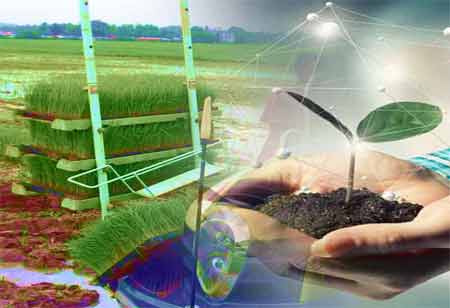Thank you for Subscribing to Agri Business Review Weekly Brief
Navigating Challenges in Agrochemical Formulation
The agrochemicals industry is a dynamic and evolving field, requiring innovative solutions to create sustainable, eco-friendly products that support agriculture's future.

By
Agri Business Review | Tuesday, March 25, 2025
Stay ahead of the industry with exclusive feature stories on the top companies, expert insights and the latest news delivered straight to your inbox. Subscribe today.
FREMONT, CA: The agrochemical sector plays a crucial role in contemporary agriculture, supplying essential products such as pesticides, herbicides, and fertilizers that enhance crop yields and combat pests and diseases affecting plants. Nonetheless, there are significant challenges in the formulation of these agrochemicals. Addressing these challenges is essential for creating effective, safe, sustainable agricultural methods. The primary obstacles encountered in the formulation of agrochemicals include the following.
Multi-Active Ingredient Formulations
Such a combination may increase efficiency by reducing the number of applications; however, the big problem is ensuring the compatibility and stability of such ingredients. The active ingredients will have varying solubilities, stabilities, and reactivities, which will make formulating an effective homogeneous product difficult.
Moving to Oil Dispersions
Oil dispersions are highly demanded today because they increase the bioavailability and activity of the actives. Formulating an oil dispersion is associated with many formulation problems, such as emulsification, viscosity, and phase separation, for which a solution needs to be found. Achieving a stable, homogeneous dispersion is crucial for product performance.
Replacing Microplastics in Formulations
Microplastics have been widely used in agrochemical formulations, particularly capsule suspensions and flowable seed treatments. However, environmental concerns and regulatory pressures drive the need to find alternative materials. Developing biodegradable or environmentally friendly substitutes that maintain the same level of efficacy and stability is a significant challenge.
Improving the Stability of Microbial Formulations
This includes microbial preparations with non-pathogenic microorganisms, which are usually harmless to pests and stimulate plant health. However, maintaining the viability and stability of these microorganisms during storage and application is a big challenge. Factors involving temperature, humidity, and UV exposure could influence the efficacy of microbial products.
Localizing Agricultural Formulations
Different regions have different agricultural conditions, which usually means a need for localization of an agrochemical formulation. Some of the desired final results depend on soil type, climate, and crop varieties. All these demand much research and adaptation to guarantee performance within the environment.
Utilizing Plant Extracts
Plant extracts are natural and very well-accepted, sustainable alternatives to synthetic chemicals in agrochemical formulations. However, the composition of plant extracts varies, which could pose some challenges with respect to standardization and consistency. Plant-based formulations will require a great deal of research and development to ensure stability as effective and equal to their synthetic counterparts.





